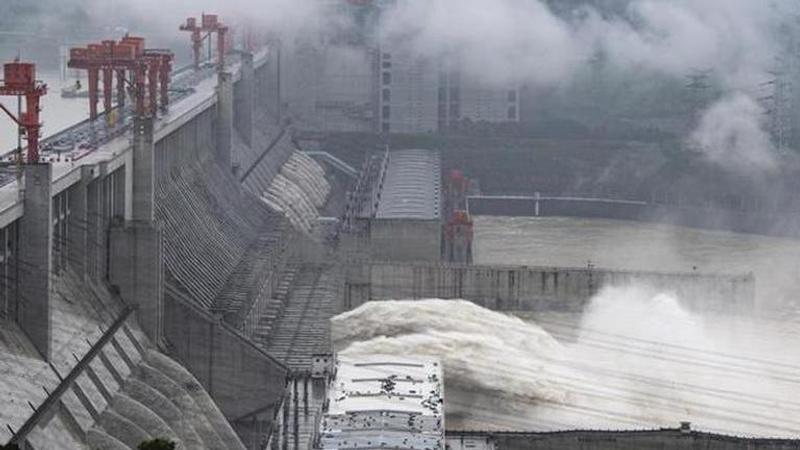Published 06:34 IST, April 15th 2022
China aiming for 'hydro-hegemony' via construction of dam projects in Tibet: Report
“Water is seen as a strategic asset for China wherever it occurs in China,” said Geoff Dabelko, director of the Environmental Change and Security Program.

With its numerous dam projects and hydroelectric power plants on the trans-border rivers flowing through undulating terrains in Tibet, China has been attempting to ace the “hydro-hegemony” in order to dominate the water economy in Southeast Asia, a report in the Global Order has warned. Beijing has been trying to assert sovereign claims over Southeast Asia’s water lifelines, such as the Mekong, Irrawaddy, and Salween rivers all flowing from the Tibet region, including China’s own two major rivers Yangtse and the Yellow River.
The PRC has also strategically managed to avoid signing any legal obligations to exercise sovereignty on the water bodies in Tibet that are a source of cheap hydroelectricity for its own economy and safeguards its own interests of food and water security for the citizens over the expense of the neighbouring nations.
China alone owns more than 30,000 of the total dams globally, most of which were constructed post-Tibet’s occupation. The country is also blamed for its widely “ill-conceived environmental and developmental policies” such as the Great Leap Forward, the South-North Water Diversion Project, and more, the report on Thursday said. It warned that China’s belligerent acts of being a “water hegemon” will lead to disastrous consequences for the East Asian nations and on the region’s major rivers.
In the line waiting is the geopolitical implication for countries like India due to China’s “unnatural appetite for building dams” upstream. For instance, China is constructing a mega-dam on the Brahmaputra river in Metok County historically known as Tibet’s Pema Koe region which is speculated to be bigger than the Three Gorges Dam— the world’s current largest power station. This could impact both India and Bangladesh’s water resources.
The Three Gorges Dam on the Yangtze River in central China is currently the world’s biggest dam. Credit: Wang Gang/Xinhua via AP
Serious repercussions for countries like India, Nepal, Bhutan, and Myanmar
The northern region of China that has major metropolises of Beijing and Tianjin constitutes just a meagre 19% of water resources for 47% of China’s total population. Due to rapid industrialization, by 2030, Beijing is expected to face a critical shortage of water supply as its demand is expected to surge to 25%.
China’s water deficit by 2050 is expected to be 400 billion cubic meters, and hence the Chinese government has been occupying Tibet’s water supply posing serious repercussions for countries like India, Nepal, Bhutan, and Myanmar. Director of Asia Studies at the Council on Foreign Relations in New York, Elizabeth Economy, explains that China is circumspect about the “strategic consequences of the Tibetan Plateau’s freshwater supplies.” And so, it raises “emerging conflicts with India and Southeast Asia. They also receive their water from the Tibetan Plateau.” Beijing’s China-Tibet Railroad which costs an estimated $4 billion illustrates its ‘water dilemma.’
India's Brahmaputra flows from China as Yarlung Zangbo river supports thousands of fishing communities along its banks. Credit: Anupam Nath/AP
“Water is seen as a strategic asset for China wherever it occurs in China,” said Geoff Dabelko, director of the Environmental Change and Security Program at the Woodrow Wilson International Center for Scholars in Washington, DC says.
“Because so much of the water for China and the region originates in Tibet, it adds an additional level of importance and political sensitivity and context that does not get the attention it deserves,” he added.
Economic strife in Thailand, Laos and Myanmar
China has constructed a series of dams along the Mekong River in China’s Yunnan province since the 1990s that cut back almost 50 percent of the river flow in early 2021 causing economic strife in Thailand, Laos, and Myanmar. PRC’s use of dams “will cause serious droughts along the lower Mekong,” warns a 2019 study by the ecological research and consulting firm Eyes on Earth. The ecological and security situation might be one of the biggest challenges for India which is ill-equipped to deal with a sudden and severe water crisis, it continues.
According to a report released by the Australian Tibet Council, nearly 1.4 billion people in downstream countries like India, Pakistan, Bangladesh, and Myanmar hugely depend on water from rivers that originate in the Chinese-occupied Tibet regions. And the risk of water quantity shrinking with China’s rampant hydroelectric power plant projects increases by every minute. “It is sneaking up the international policy agenda,” says John Jones of Free Tibet. “At the moment, it is perceived as a regional problem rather than the global problem it will later go on to become.”
Updated 06:34 IST, April 15th 2022






